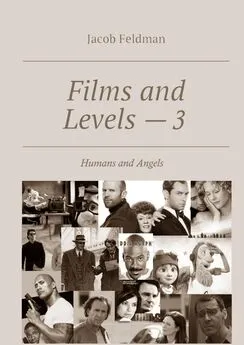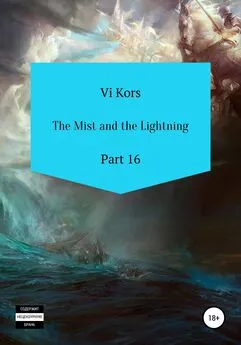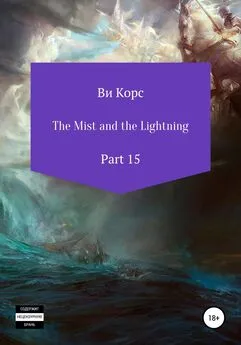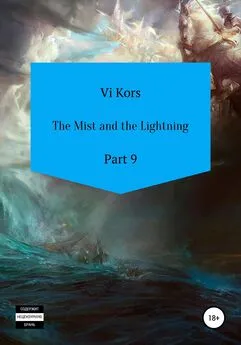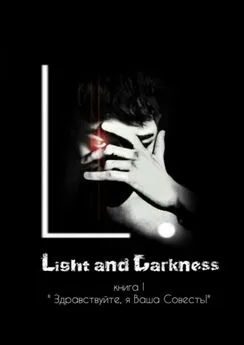Lev Regelson - Light and Dark Images of Apocalypse
- Название:Light and Dark Images of Apocalypse
- Автор:
- Жанр:
- Издательство:неизвестно
- Год:2017
- ISBN:нет данных
- Рейтинг:
- Избранное:Добавить в избранное
-
Отзывы:
-
Ваша оценка:
Lev Regelson - Light and Dark Images of Apocalypse краткое содержание
Light and Dark Images of Apocalypse - читать онлайн бесплатно ознакомительный отрывок
Интервал:
Закладка:
Дуапр
Apocalypse (Revelation) of apostle John the Divine

Apostle John the Divine on Pathmos by reception of Apocalypse (Revelation). John at Patmos. The Nizhny Novgorod, Art Museum, XVII c.
Whenever a man of nowadays hears a word "Apocalypse", he imagines scenes of horror and death. Gloomy predictions and prophecies describe the future as the "end of world". However, if we read the Apocalypse (Revelation) of St. Apostle John the Divine or Theologian with an open mind, we will realize that what is really implied in this book is a triumphant paean heralding the Coming of Jesus Christ. The world of evil and misery is transforming into a world of light and joy. The forces of Darkness are desperately striving to seize the initiative and capture the earth, but they will sustain a crushing defeat.
It is the radiant images that primarily attract our attention when we read the revelation, though we have to take into account the forces of Darkness. The interpretive approach we have adopted blends artistic imagery with theological intuition emphasizing the traditions of the early Christian, Holy Fathers, Byzantine and Russian Churches. Yet this essay is neither a theological treatise or scholarly study.
Though we have no intention of eschewing the value of contemporary biblical appraisal, which has so signally enriched our understanding of the human factor in the writing of the Holy Scriptures, despite the multiplicity of such writers, it must necessarily be stressed that their principal, constant co-author is God Himself. The writings of the Holy Bible may reveal a new meaning to each successive epoch and generation, as the said meaning is truly infinite.
Each chapter and verse of the Scriptures, the time of whose writing may be centuries apart, interact as the moments of one grand symphony. The uncertain, reachable meaning of the biblical prophecies furnishes one more indication of their divine origin; thus is the freedom of man safeguarded against attempts at a logically coerced interpretation. In no position to encompass the entire range of imagery covered in the Apocalypse (Revelation), we must of necessity confess that much still defies comprehension. Indeed within the stupendous panorama that Apostle John the Divine reveals we discern merely the contours of the leading personages and some crucial events.
One Who sits on the throne
He is the principal personage in the Apocalypse, to wit:
" О ur God which sitteth upon the throne" (7:10).
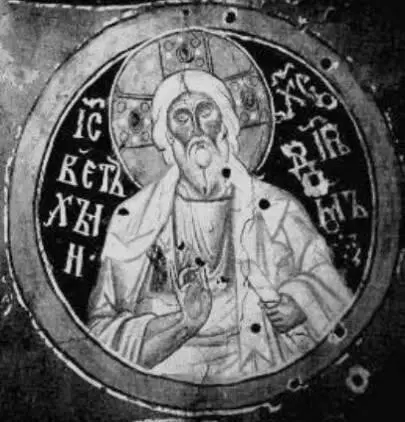
Jesus Christ – Ancient of Days. Russian fresco, Church of Pokrov on Nerl, 1199.
As God He is mentioned in the Revelation fifty odd times, as "The One who sits on the throne" fourteen times.
At once, a howling contradiction arose with the entire context of the Holy Write, which says:
Our God is an invisible God!
"No man hath seen God at any time" –
the Gospel of John declaims (1:18).
Which is most forceful, provided one agrees with the ecclesiastical tradition averring that St. John the Evangelist wrote both Revelation and Gospel, and, moreover that the Apostle wrote Gospel later. St. Justin the Philosopher, who lived in Ephesus at the start of the second century and who was personally acquainted with many of the disciples of St. John the Theologian ("the Divine"), clarifies:
"The Holy Write asserts that God appeared to Abraham, Moses and other Blessed of the Old Testament. Yet he was not God the Father, insofar as God the Father was
ever higher than the heavens, never appeared to anyone and did not converse with anyone face to face."
Yet St. John tells us that he saw God! In that selfsame image God appeared before to the Prophet Daniel who named Him "The Ancient of Days" (Dan. 7: 9, 13, 22).
The Ancient of Days or the One who sits on the throne is the Lord God the Pantocrator: yet He is not God the Father. Provided we adhere to biblical reality and do not reduce the grandeur of the Epiphany to allegorical scenes, we shall be constrained to conclude that He who revealed Himself to St. John the Theologian and to the Prophet Daniel was Jesus Christ in His divine nature
Having told this, we already entirely have appeared in the realm of holy fathers theology, with its three dogmas: about the Holy Trinity, about the two natures of Christ and about the icon-worship.
The issue mooted is how it is possible to see by the human eyes Jesus Christ as God. The Holy Trinity is God the Father, God the Son, God the Holy Spirit; not three Gods but One God; not one Person but three. Three Persons of the Holy Trinity are of one nature: if the Father is not to be seen, hence the Son is not to be seen and the Holy Spirit is not to be seen.
Now Jesus Christ is God's Son, in Whom
“dwelleth all the fulness of the Godhead bodily” (Col.2:9).
So how can we affirm that He was seen by both St. John and Daniel?
After the dogma of icon-worship won a victory in the eighth century, it was stated that only what could be seen by the human eye could be depicted. Since Daniel had seen the Ancient of Days, hence He could be depicted on icons. And He was indeed often and profusely thus portrayed. Besides the captions of "The Ancient of Days" and "Jesus Christ" encountered as synonyms on one and the same icon. Moreover Byzantine theologians identified the Ancient of Days and, consequently, Jesus Christ as God, with Whom Israel know as Yahweh:
I AM THAT I AM Ex. 3:14
What then of the invisibility of God?
The matter remained not fully clear until there emerged the teaching of the Divine Energies, associated with the name of St. Gregory Palamas, the great fourteenth-century Byzantine theologian.
For centuries Eastern Christian monks practiced the transfiguration of their nature similar to the Transfiguration which Jesus Christ manifested on Mount Tabor. Prayers bodies began to emanate a radiation from within, and there was no question but this light was of a divine nature that did not exist in the created world.
The need to evolve a theological explanation for this practice had led St. Gregory Palamas to evolve in detail that inherently biblical creed of the Divine Energies. Rather was he constrained there to due to the emergence of the false allegation as if the light on Mount Tabor was of natural origin similar to the luminous aura of the Hindu yogi.
According to the teaching of St. Gregory Palamas, which the local councils of Constantinople had confirmed, God by His very nature is invisible, undepictable, incomprehensible. Which St. John the Evangelist implies when he says:
"No one has ever seen God" (1:18),
and which is why Moses forbade the representation of God.
However God is alive and operating. Actions, for which the Greek is "energies", of the Holy Trinity is that selfsame divine nature emanating from itself, pouring out. In its quality of energy Divine nature is visible, depictable, comprehensible and, moreover may penetrate from inside and fill human nature.
Hence, we may now understand how God could become visible. Set of the energies of the Holy Trinity forms the eternally uncreated Divine "body" which can be visible to the human eye. In this eternal embodiment of His, the One God is Jesus Christ, He is also Yahweh, He is the Ancient of Days and the One who sits on the throne. In Paradise, Adam saw Him and conversed with Him. And hence, we, employing our erroneous terms, could say that God had revealed Himself to Adam in His "human image". It would be correct though to say that man is created "in the image and likeness" of God, of Jesus Christ in His Divine body.
Lamb
The name of "The Lamb", that is repeated some thirty times in the Revelation, designates Jesus Christ as the man who sacrificed Himself to redeem us:
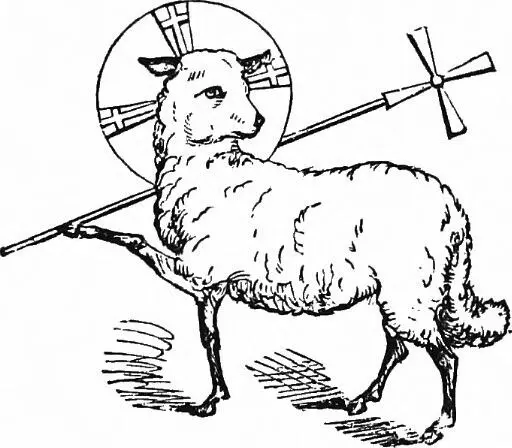
Jesus Christ the Lamb. Agnus Dei, Emory University, Pitts Theology Library.
“Thou wast slain, and hast redeemed us to God by thy blood out of every kindred, and tongue, and people, and nation…” (5:9) .
For which reason St. John announces in his Revelation:
“Worthy is the Lamb that was slain to receive power, and riches, and wisdom, and strength, and honour, and glory, and blessing” (5:12).
Therein is all essence of Revelation: “One slained” is receiving power. The Apocalypse demonstrates the conflict between two worlds, two types of relations between personalities, two types of power and authority.
In the world of the Beast, the authority belongs to the butcher, in the world of God – to the victim. The Apocalypse thereby reveals to us the sense of the Gospel.
People with vestiges of pagan consciousness now and again consider the character of the gospel Jesus as too soft and weak, well-nigh feminine. Nothing could be further from the truth. Jesus is the possessor of the utmost courage of which man is capable, yet at the same time is the bearer of genuine power. That is simply such courage and such power. Pagans will never comprehend that until directly affected by this force:
“These shall make war with the Lamb, and the Lamb shall overcome them: for He is Lord of lords, and King of kings” (17:14).
That authority was manifested on the Cross when Jesus Christ said of his butchers:
"Father, forgive them; for they know not what they do" (Luke 23:34).
And this word does not remain in vain, because He speaks as one that had authority: to denounce or forgive.
The forgiveness or curse that the victim utters upon his butchers, is of absolute power, for thus it is ordained by God. Only once in the New Testament, and precisely in the Revelation, there comes from the lips of the martyrs the verdict of condemnation. This occurs after the breaking of the Fifth Seal, when the souls of those "slaughtered for God's words" cry out to God:
“How long, O Lord, holy and true, dost thou not judge and avenge our blood on them that dwell on the earth?” (6:10).
Indeed, something very strange and extraordinary must happen in the world for the usual entreaty victims make to forgive their butchers to yield to a cry for vengeance… It is told to them, that their requirement will be executed:
“And white robes were given unto every one of them; and it was said unto them, that they should rest yet for a little season, until their fellowservants also and their brethren, that should be killed as they were, should be fulfilled” (6:11).
By now we wonder what relationship may exist between the One who sits on the throne and the Lamb.
These two Persons often appear side by side. Thus the Lamb came to the One who sits on the throne (5:7)
Конец ознакомительного фрагмента.
Текст предоставлен ООО «ЛитРес».
Прочитайте эту книгу целиком, купив полную легальную версию на ЛитРес.
Безопасно оплатить книгу можно банковской картой Visa, MasterCard, Maestro, со счета мобильного телефона, с платежного терминала, в салоне МТС или Связной, через PayPal, WebMoney, Яндекс.Деньги, QIWI Кошелек, бонусными картами или другим удобным Вам способом.
Интервал:
Закладка:

